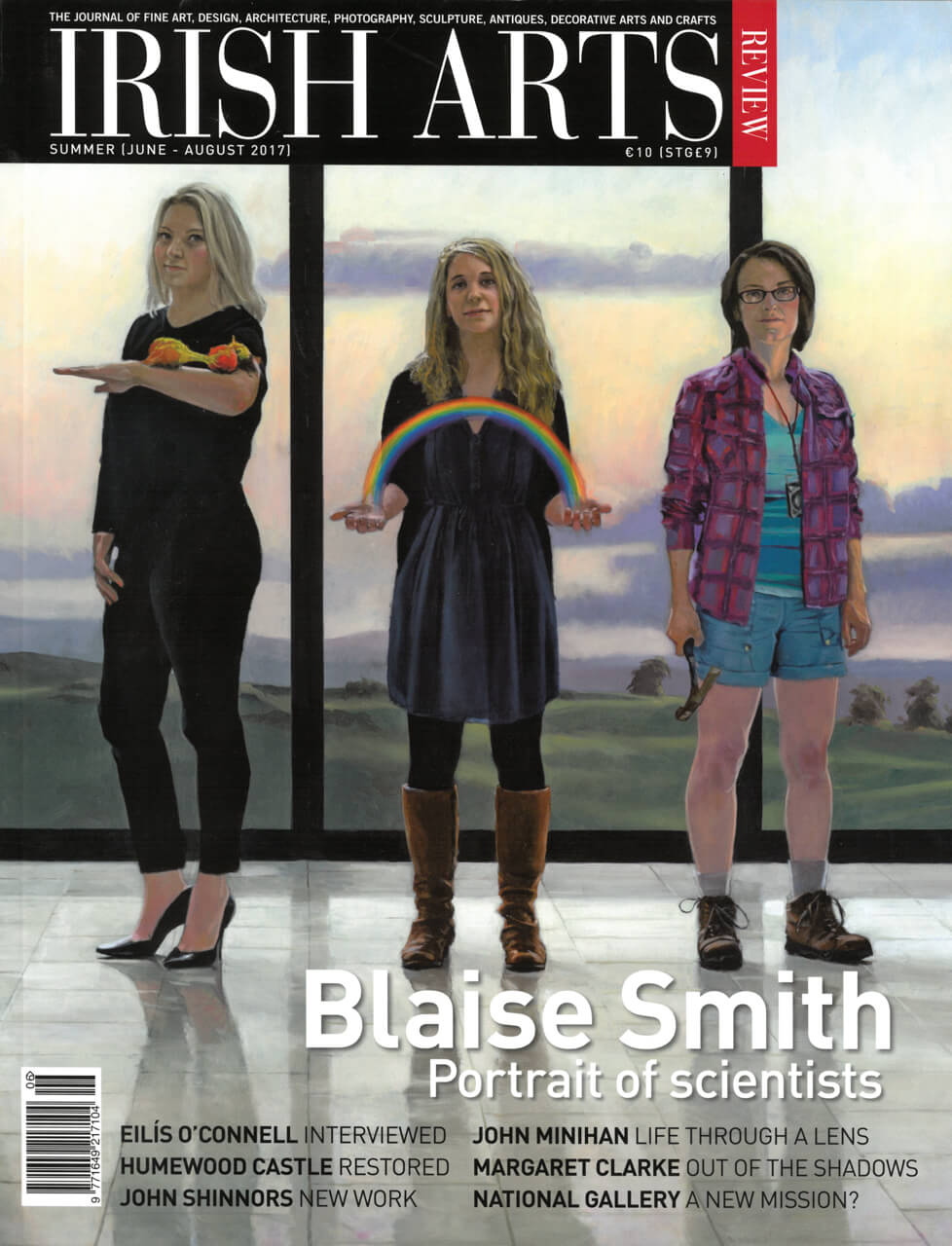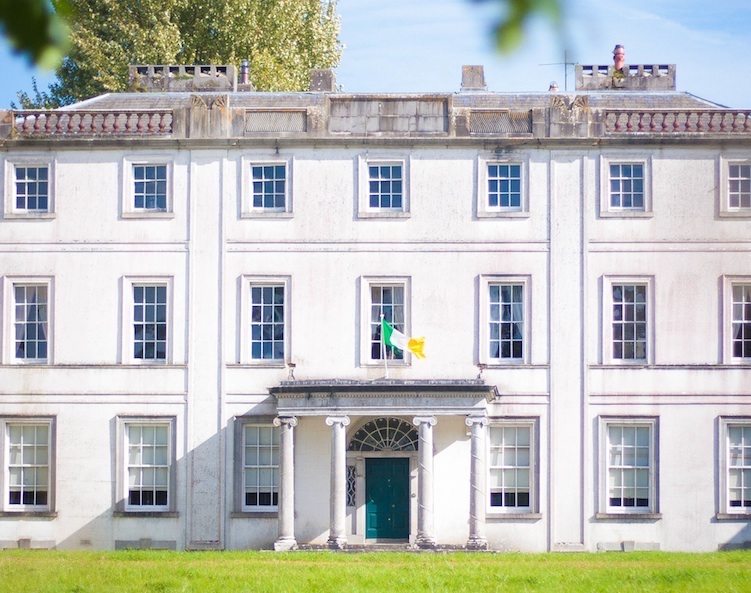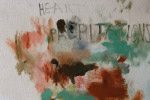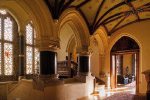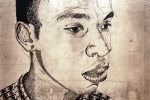
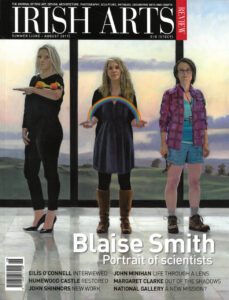
Eddie Rafferty’s love affair with Africa is manifest at his first major survey exhibition on view this summer at the FE McWilliam Gallery, Banbridge, writes Riann Coulter.
Eddie Rafferty collects people and their stories. His prints, drawings, paintings and collages depict the people and places that he has encountered at home and abroad. If you are lucky enough to meet the artist, he may regale you with the details of how he met the subject of Refugee from Zimbabwe (Fig 3), or share his memories of a rural childhood near Gilford, County Down. Even if you don’t have Rafferty on hand, the individual histories of his subjects are etched into their features and the artist’s empathy and fascination with humanity shines through.
Now based in Banbridge, close to the FE McWilliam Gallery, Rafferty is an artist who has a small, but devoted, following. If his art is not as well-known as it should be that is partly due to his own reticence to embrace the art world. Although he regularly shows in the RUA and has recently been included in an exhibition at Taylor Galleries, Dublin, he does not seek out fame. His day job as a resident artist working in health and social care settings has also, perhaps, provided a focus outside the need to find an audience. Rafferty’s path to art was not conventional. He was only seventeen when the photographer Victor Sloan, his teacher at Lurgan Technical College, included his work in an exhibition at The Peacock Gallery in Craigavon. Like many of the others who passed through Sloan’s classroom, Rafferty benefitted from being taught by a respected photographer who lived locally and made art about their place. Sloan’s influence may also have helped establish Rafferty’s use of photography as a source and reference for his work. The imagery of the Danish photographer Jacob Holdt, whose series American Pictures from 1977, depicts the struggles of the disadvantaged in the USA, was an important influence on Rafferty’s approach to his subjects. As Feargal O’Malley, co-curator of this exhibition, has suggested, the composition of Rafferty’s work has more in common with how an image is framed through a viewfinder than drawing from life.
After Tech, Rafferty went to work with Shane Wright, a talented designer and maker who had a leather shop in Gilford where he made belts and handbags. Working as Shane’s apprentice, Rafferty learnt to design and make things that were beautiful, practical and in demand – the designer Paul Costelloe was a customer.
When the shop closed, Rafferty followed the well-trodden path to London to work on building sites. He continued to draw at night, but it was not until he was twenty-three that he had the opportunity to go to art college in Belfast. For the first two years he focused on painting before switching to print. The technical challenges of print suited the craftsmanship he had learned with Shane. Although his practice has expanded beyond print, and now includes drawing, painting and collage, Rafferty is still influenced by the skill and attention to detail that he learnt during hours spent in Belfast Print Workshop.
Some of the earliest works in this exhibition are a series of colour lithographs depicting nostalgic subjects including Banbridge’s long demolished Art Deco cinema, Gilford Pigeon Club and one of the weekly céilís at Rafferty’s childhood home. These local scenes are depicted in a playful folk-art aesthetic that is in stark contrast to the fine draughtsmanship seen in later etchings, particularly the series of large heads of young men, made from life in South Africa (Fig 1).
Rafferty recalls that it was while looking at a map in The Curfew Tower, Cushendall, Co Antrim, that the idea of going to Africa took hold. He applied for a residency at the Bag Factory in Johannesburg and soon found himself heading off for a seven-week trip. This was the start of Rafferty’s love affair with Africa and her people. Over the next decade he returned nine times, primarily to residencies in hospitals that he organised himself. Although some of the work featured in this exhibition was made in Africa, the people and places that Rafferty encountered there continue to appear in his images produced years later.
The patients and service users that Rafferty meets through his work in hospitals are another source of inspiration. Figures lying on beds in institutional settings are often based on individuals he has got to know over many years. Rafferty’s tender portrayals of these often marginalised figures, people not often depicted in art, is a continuation of his early interest in the ordinary and the overlooked. Rafferty’s artistic influences include familiar masters such as Egon Schiele and Sidney Nolan and less obvious figures from the South African canon including Sam Nhlengethwa, William Kentridge and Marlene Dumas. Ultimately, Rafferty’s heroes are the people who become the subjects of art. The people he collects alonwg the way.
Eddie Rafferty ‘ The Pursuit of Happiness’ FE McWilliam Gallery, Banbridge, County Down
17 June – 2 September 2017.
Riann Coulter is curator of the FE McWilliam Gallery.
